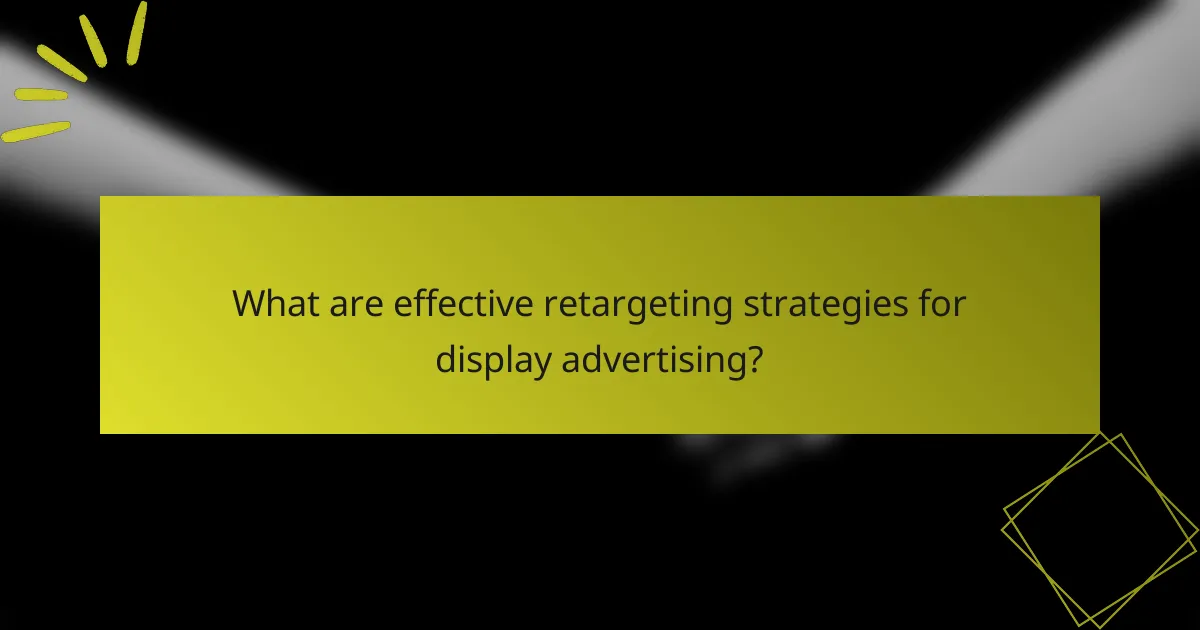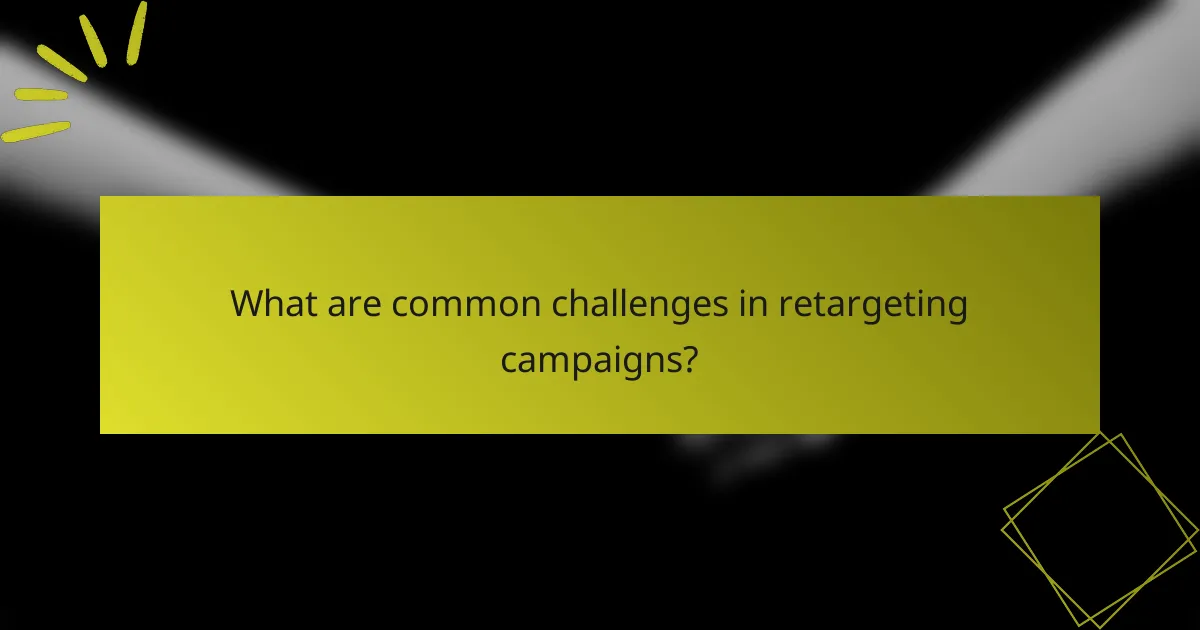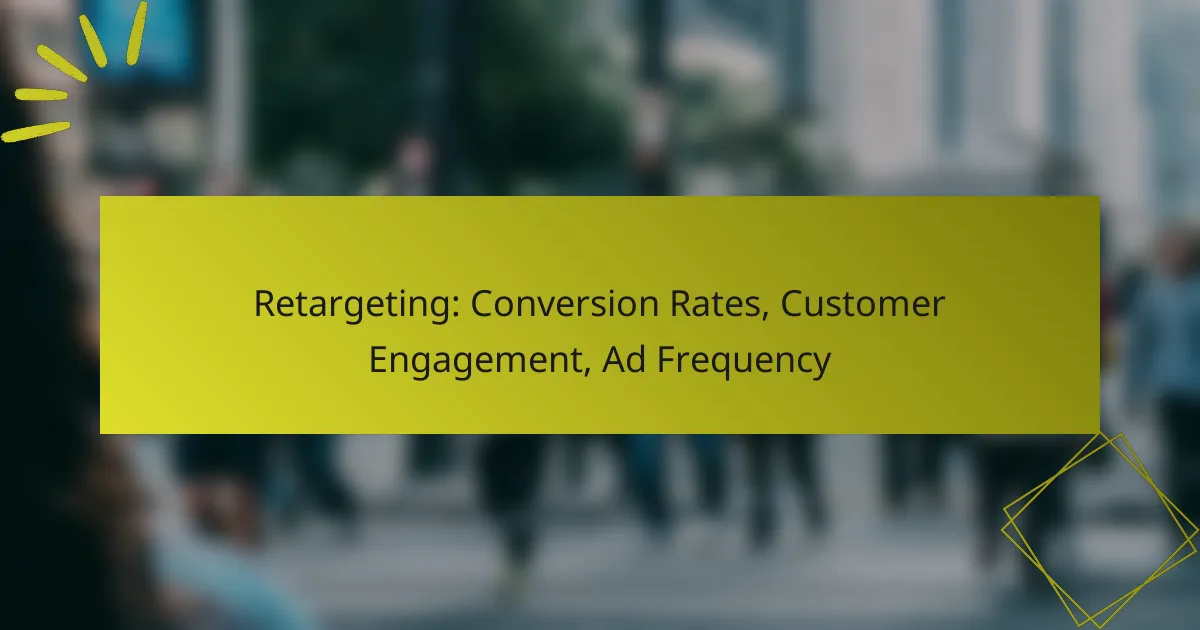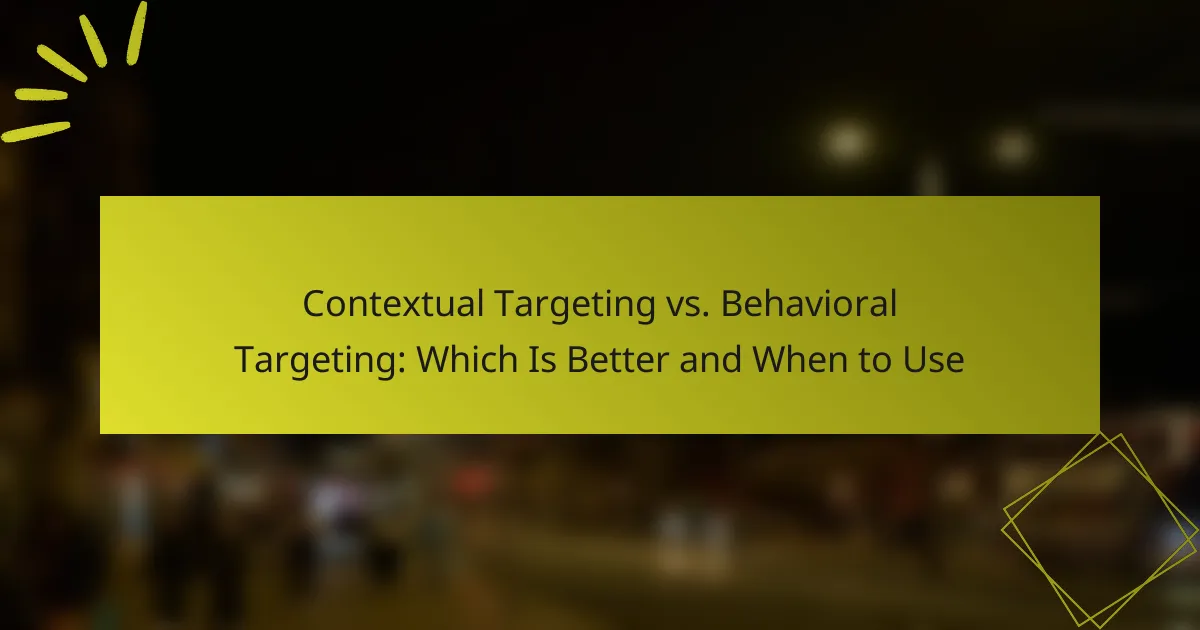Retargeting is a powerful marketing strategy that boosts conversion rates by re-engaging users who have previously shown interest in a brand. By delivering personalized ads to these potential customers, businesses can effectively remind them of their previous interactions and motivate them to finalize their purchases. However, managing ad frequency is essential to maintain customer engagement, as too many impressions can lead to fatigue while too few may result in lost opportunities.

How does retargeting improve conversion rates?
Retargeting enhances conversion rates by re-engaging potential customers who have previously interacted with a brand. By displaying tailored ads to these users, businesses can remind them of their interest and encourage them to complete their purchases.
Increased brand recall
Retargeting significantly boosts brand recall by keeping a brand top-of-mind for users who have shown interest. When customers see ads for products they previously viewed, it reinforces their memory of the brand and its offerings.
This repeated exposure can lead to a stronger connection with the brand, making it more likely that users will choose it over competitors when they are ready to make a purchase.
Higher click-through rates
Retargeted ads typically achieve higher click-through rates (CTR) compared to standard display ads. Users who have already engaged with a brand are more inclined to click on ads that remind them of their previous interactions.
For instance, a retargeted ad may see CTRs that are several times higher than average, often ranging from 0.5% to 2% or more, depending on the industry and ad quality.
Personalized ad experiences
Retargeting allows for the creation of personalized ad experiences that resonate with individual users. By utilizing data from previous interactions, businesses can tailor their messaging and offers to meet the specific interests of potential customers.
This personalization can include showcasing items that users viewed, offering discounts on abandoned carts, or suggesting complementary products, all of which can significantly enhance the likelihood of conversion.

What is the impact of ad frequency on customer engagement?
Ad frequency significantly affects customer engagement, as it determines how often potential customers see your advertisements. Striking the right balance is crucial; too few impressions may lead to missed opportunities, while excessive exposure can lead to ad fatigue.
Optimal frequency ranges
Research suggests that an optimal ad frequency typically falls between two to four impressions per week for most campaigns. This range allows brands to stay top-of-mind without overwhelming the audience. Adjustments may be necessary based on the product type and customer behavior.
For example, high-involvement products, like cars or electronics, may benefit from slightly higher frequencies, while low-involvement items, such as snacks, might not require as many impressions to achieve effective engagement.
Effects of overexposure
Overexposure to ads can lead to ad fatigue, where customers become annoyed or indifferent, resulting in decreased engagement rates. This phenomenon can also harm brand perception, making customers less likely to convert. Studies indicate that engagement can drop significantly after just a few excessive impressions.
To mitigate these effects, brands should monitor engagement metrics closely and be prepared to adjust their strategies if they notice declining performance due to high frequency.
Strategies for frequency management
Effective frequency management involves using data analytics to track customer interactions and adjust ad delivery accordingly. Implementing frequency capping can help limit the number of times an individual sees an ad within a specific timeframe.
Additionally, segmenting your audience based on their engagement levels allows for tailored ad experiences. For instance, highly engaged users may receive more frequent ads, while less engaged users might benefit from a lighter touch to avoid fatigue.
- Monitor engagement metrics regularly.
- Use frequency capping to prevent overexposure.
- Segment audiences for tailored ad delivery.

What are effective retargeting strategies for display advertising?
Effective retargeting strategies for display advertising focus on reaching potential customers who have previously interacted with your brand. These strategies enhance conversion rates and customer engagement by delivering tailored ads that resonate with users’ past behaviors.
Segmenting audiences
Segmenting audiences involves dividing your target market into distinct groups based on their behaviors, demographics, or interests. This allows for more precise targeting, ensuring that your ads are relevant to each segment. For example, you might create separate campaigns for users who abandoned their shopping carts versus those who viewed specific products.
When segmenting, consider factors such as purchase history, browsing patterns, and engagement levels. This targeted approach can significantly improve conversion rates, as users are more likely to respond to ads that reflect their unique preferences.
Dynamic ad personalization
Dynamic ad personalization tailors ad content in real-time based on user data, such as previous interactions with your website. This means that if a user viewed a particular product, they might see ads featuring that product or similar items. Personalization can increase engagement by making ads feel more relevant and timely.
To implement dynamic personalization effectively, utilize data from your customer relationship management (CRM) system and website analytics. Ensure that your ads are visually appealing and include clear calls to action that encourage users to return and complete their purchases.
Cross-channel retargeting
Cross-channel retargeting involves reaching users across multiple platforms, such as social media, email, and display networks. This strategy ensures that your brand remains top-of-mind, regardless of where users are engaging online. For instance, a user who visits your website could later see your ads on Facebook or receive a follow-up email.
To execute cross-channel retargeting effectively, maintain consistent messaging and branding across all channels. Use tracking tools to monitor user interactions and adjust your campaigns based on performance metrics to optimize engagement and conversion rates.

How can businesses measure retargeting success?
Businesses can measure retargeting success through various metrics that indicate customer engagement and conversion rates. Key performance indicators, attribution models, and analytics tools are essential for evaluating the effectiveness of retargeting campaigns.
Key performance indicators
Key performance indicators (KPIs) for retargeting include conversion rates, click-through rates (CTR), and return on ad spend (ROAS). A typical conversion rate for retargeting campaigns can range from low single digits to high teens, depending on the industry and audience targeting.
Monitoring these KPIs helps businesses understand how well their ads are performing and whether they are effectively re-engaging potential customers. Regularly analyzing these metrics allows for timely adjustments to improve campaign performance.
Attribution models
Attribution models determine how credit for conversions is assigned to different touchpoints in the customer journey. Common models include last-click, first-click, and linear attribution, each providing different insights into how retargeting influences sales.
Choosing the right attribution model is crucial for accurately assessing the impact of retargeting efforts. For example, a last-click model may undervalue retargeting if a customer initially interacted with an ad but converted later through a different channel.
Analytics tools
Analytics tools such as Google Analytics, Facebook Ads Manager, and specialized retargeting platforms provide valuable insights into campaign performance. These tools can track user behavior, measure engagement, and report on conversions, helping businesses optimize their strategies.
Utilizing these analytics tools effectively requires setting up proper tracking and understanding the data they provide. Regularly reviewing reports and dashboards can help identify trends and areas for improvement in retargeting campaigns.

What are common challenges in retargeting campaigns?
Retargeting campaigns often face challenges that can hinder their effectiveness, such as ad fatigue and privacy concerns. Understanding these issues is crucial for optimizing conversion rates and enhancing customer engagement.
Ad fatigue
Ad fatigue occurs when users see the same ad repeatedly, leading to decreased engagement and effectiveness. This can result in lower click-through rates and reduced conversions, as customers may become annoyed or desensitized to the message.
To combat ad fatigue, consider rotating ads frequently and varying the messaging or visuals. Implementing frequency caps can also help limit how often the same user sees an ad, maintaining their interest over time.
Privacy concerns
Privacy concerns are increasingly significant in retargeting campaigns, especially with regulations like GDPR in Europe and CCPA in California. Users are becoming more aware of how their data is used, which can lead to distrust and reluctance to engage with ads.
To address privacy concerns, ensure transparency in data collection practices and provide users with clear options to opt-out of tracking. Building trust through ethical data usage can enhance customer relationships and improve overall campaign performance.



